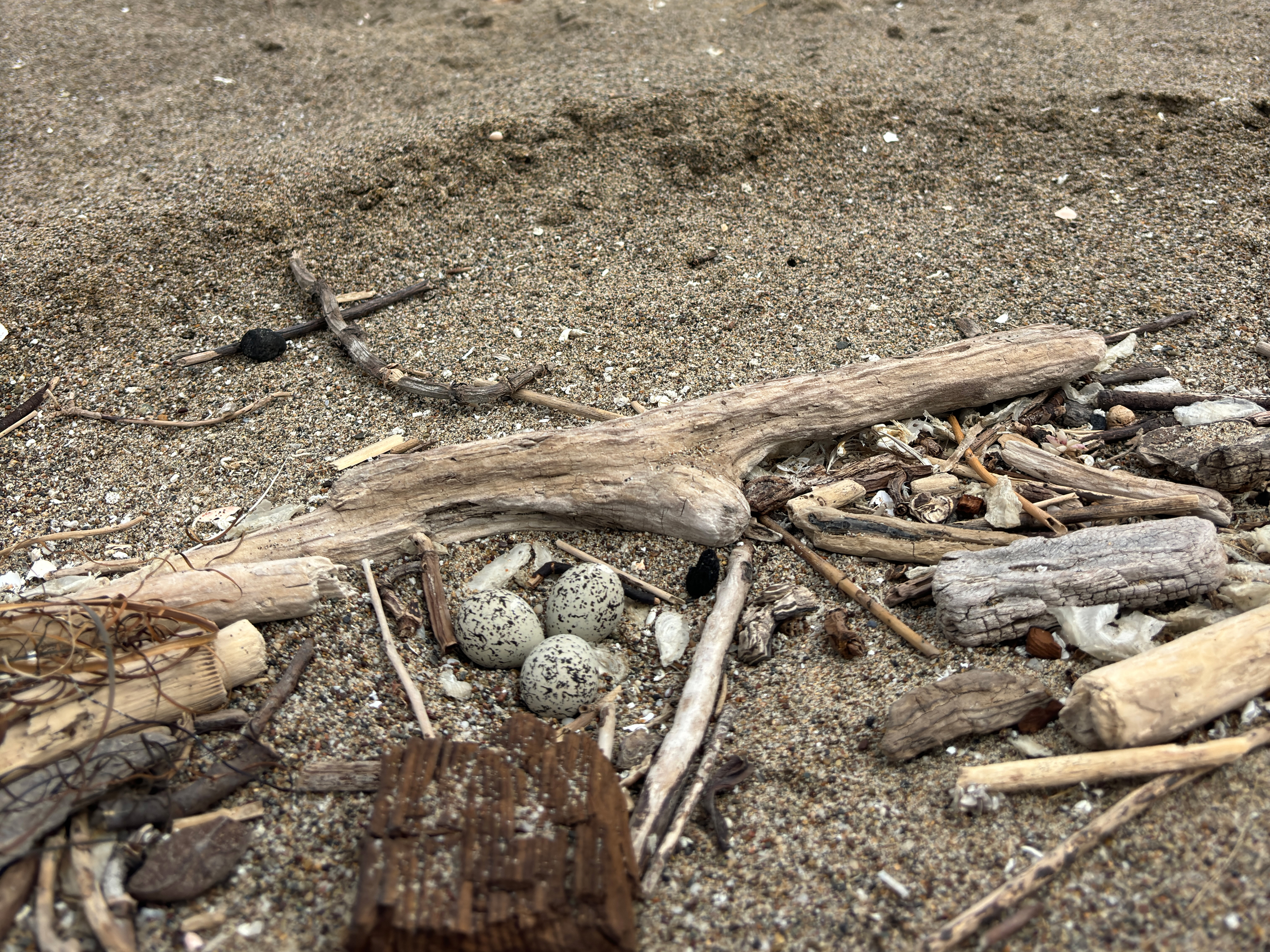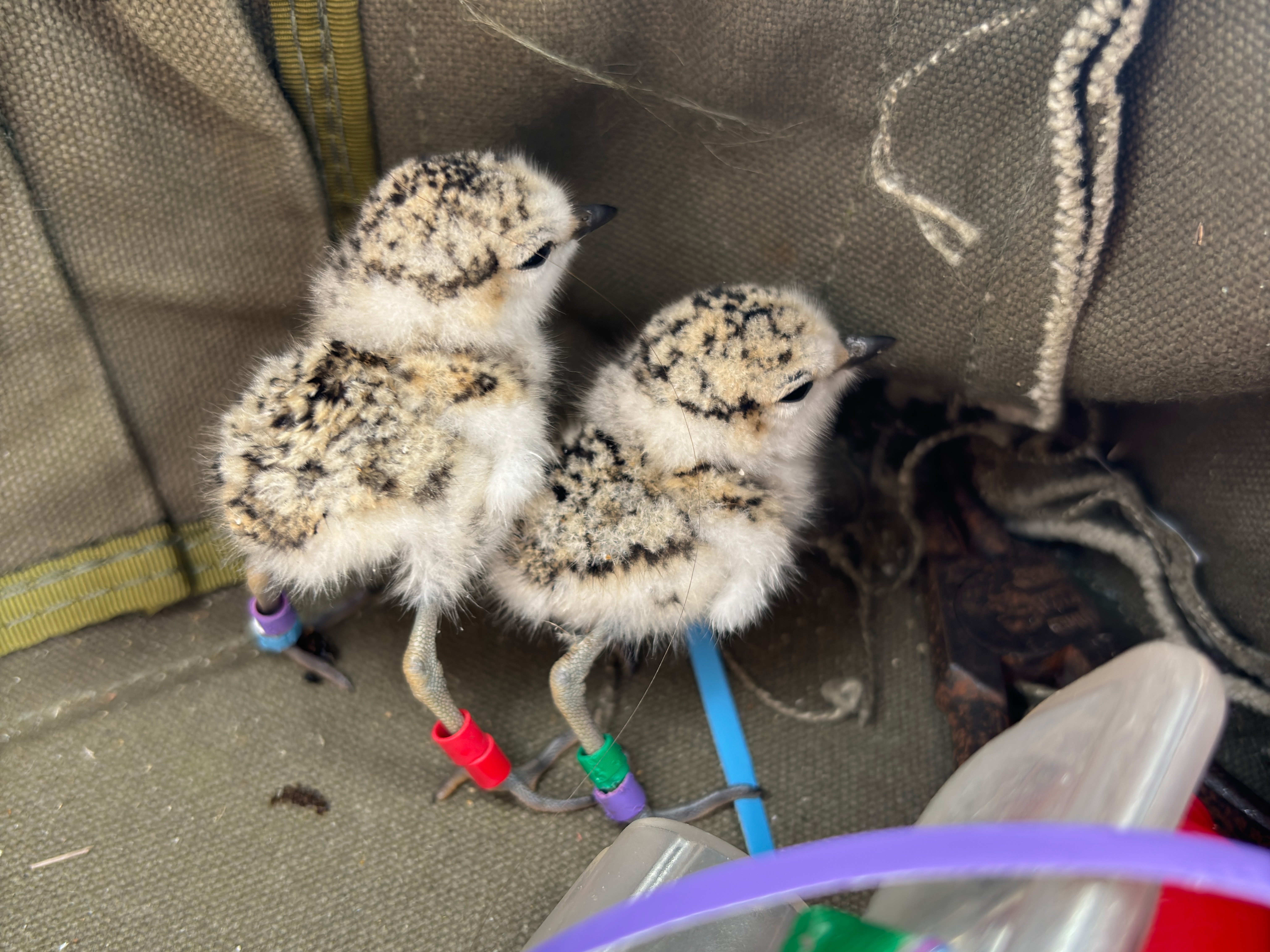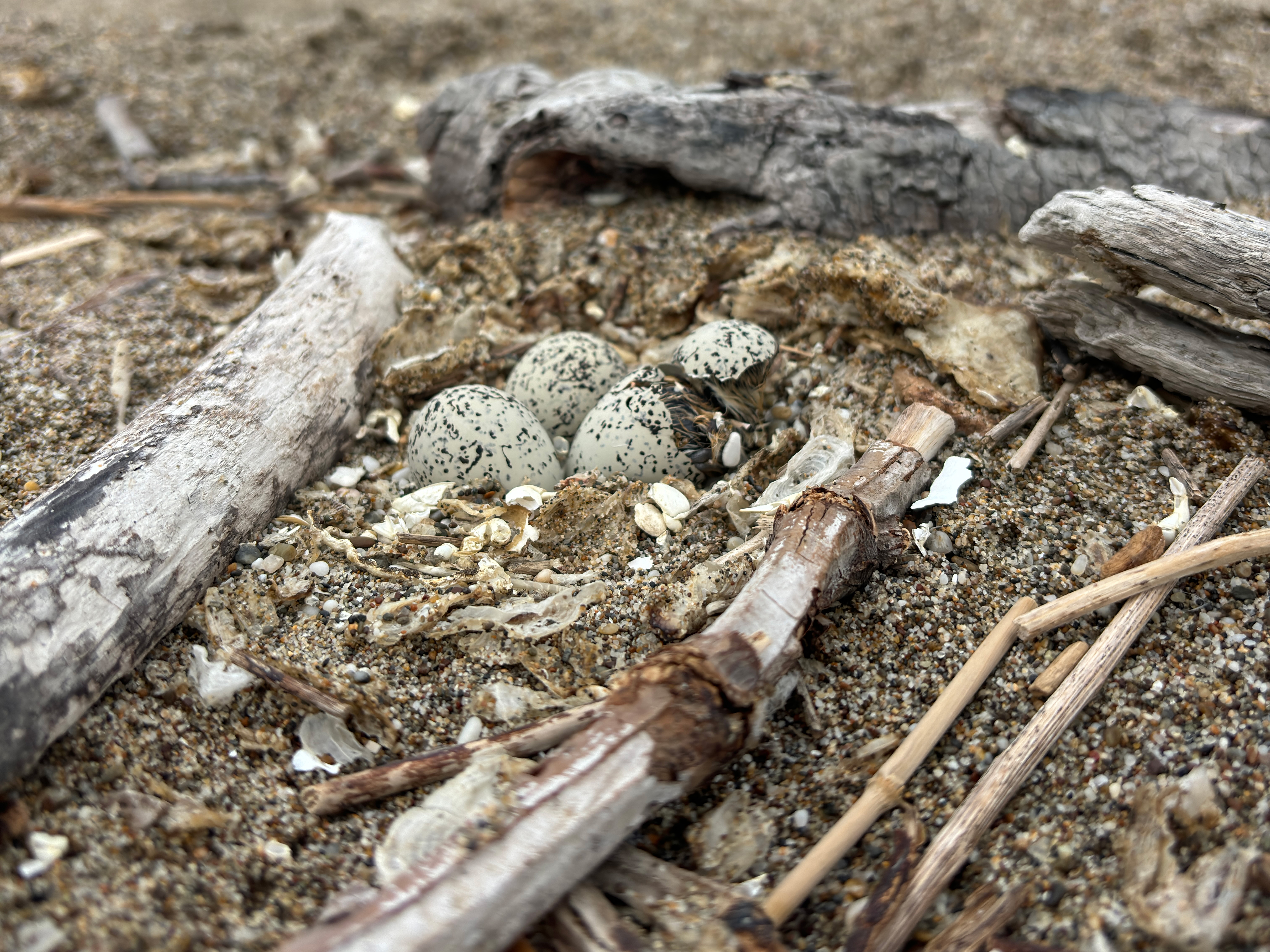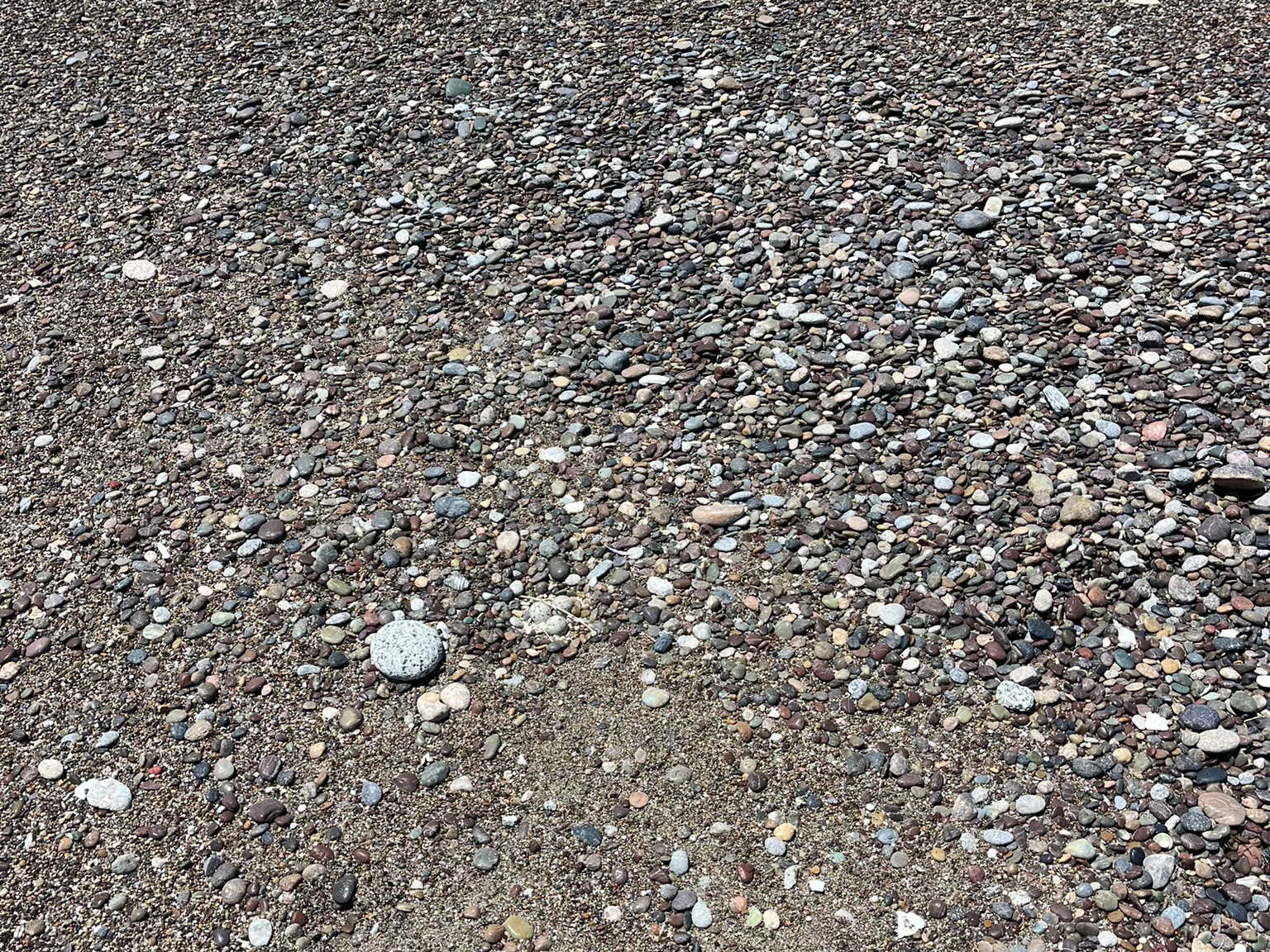Overview
Hello Ploverites!
The end of the snowy plover nesting season is in sight! Only five known nests remain, three of which are projected to hatch over the weekend, one in the Abbotts Lagoon restoration area and one on North Beach. Other active nests include: two on Kehoe Beach and one more in the Abbotts Lagoon restoration area. With the two nests hatching this weekend, the park will have up to 24 chicks running on the ground! We are hopeful a majority of these chicks will be able to survive to fledge.
Winter flocks of snowy plovers can be found at the Abbotts Lagoon mouth, south Kehoe Beach, Limantour Spit, and North Beach. Thus far, two of our fledged juveniles have been observed in the Abbotts Lagoon winter flock.
The Breeding Window Survey results back in May are in! As a whole, 353 adult snowy plovers were observed in Recovery Unit 4 (the coastlines of Sonoma, Marin, San Francisco, San Mateo, Santa Cruz, and Monterey Counties); 42 of these individuals were counted in Point Reyes National Seashore. The total count of 353 is up by 45 compared to the 2023 Window Survey!
A new nest (NP20_2024) was found earlier this week by plover biologist Aiko Goldston approximately halfway between North Beach parking lot and Abbotts Lagoon. The nest was very well hidden amongst coarse sand and rocks, albeit very low on the beach near the high tide line (see photos below). With peak high tides forecasted in the next several days, park biologists were concerned that the nest would likely be over-washed by the tides. Taking action, we contacted U.S. Fish and Wildlife Service to get authorization through our Threatened & Endangered Species Permit to remove the eggs and transport them to International Bird Rescue in Fairfield, CA. There, they would be artificially incubated to hatch, raised until the chicks fledge, and will then be released back into the park near a winter flock of snowy plovers. By saving them from the high tides, we are ensuring that the eggs survive and we hope that the released juveniles will eventually contribute to the breeding population next nesting season.
Lastly, a quick update on the Drakes Spit brood! After a couple surveys earlier this week with negative reports on Drakes Spit, the dad and chicks were observed alive and well this morning (Friday, July 19). They have just over two more weeks until they fledge.
If you have any questions, please feel free to contact Matt Lau via email.
Productivity Stats
- 41 total nests this season
- 5 active nest
- 24 hatched
- 11 failed nests
- 1 collected nest
- 14–17 chicks on PRNS beaches
- 15 chicks fledged
 Western snowy plover nest on Kehoe Beach.
Western snowy plover nest on Kehoe Beach.
Photo credit: NPS Photo / Matt Lau
 Newly banded western snowy plover chicks at Kehoe Beach rest inside a canvas container, waiting to be released.
Newly banded western snowy plover chicks at Kehoe Beach rest inside a canvas container, waiting to be released.
Photo credit: NPS Photo / Matt Lau
 Western snowy plover chick hatching from an egg at North Beach. Its two siblings hatched a couple hours later.
Western snowy plover chick hatching from an egg at North Beach. Its two siblings hatched a couple hours later.
Photo credit: NPS Photo / Matt Lau
 A new western snowy plover nest well camouflaged among coarse rocks and sand, close to the high tide line between North Beach & Abbotts Lagoon. Can you find it? With higher tides forecasted in the next several days and the nest likely to be over-washed, park biologists received authorization from US Fish and Wildlife Service to collect these eggs for transport to International Bird Rescue.
A new western snowy plover nest well camouflaged among coarse rocks and sand, close to the high tide line between North Beach & Abbotts Lagoon. Can you find it? With higher tides forecasted in the next several days and the nest likely to be over-washed, park biologists received authorization from US Fish and Wildlife Service to collect these eggs for transport to International Bird Rescue.
Photo credit: NPS Photo / Aiko Goldston
 Snowy plover eggs collected by park biologists with authorization from the USFWS to bring to International Bird Rescue. IBR will artificially incubate the eggs until they hatch, and the juveniles will be released back in the park when ready.
Snowy plover eggs collected by park biologists with authorization from the USFWS to bring to International Bird Rescue. IBR will artificially incubate the eggs until they hatch, and the juveniles will be released back in the park when ready.
Photo credit: NPS Photo / Matt Lau
 Snowy plover eggs safely strapped in for a car ride to International Bird Rescue. More tissue was used to provide cushioning above the eggs and the carton was closed during transportation.
Snowy plover eggs safely strapped in for a car ride to International Bird Rescue. More tissue was used to provide cushioning above the eggs and the carton was closed during transportation.
Photo credit: NPS Photo / Matt Lau
The National Park Service shall not be held liable for improper or incorrect use of the data described and/or contained herein. These data and related graphics (if available) are not legal documents and are not intended to be used as such. The information contained in these data is dynamic and may change over time. The National Park Service gives no warranty, expressed or implied, as to the accuracy, reliability, or completeness of these data. For more information: https://www.nps.gov/disclaimer.htm
